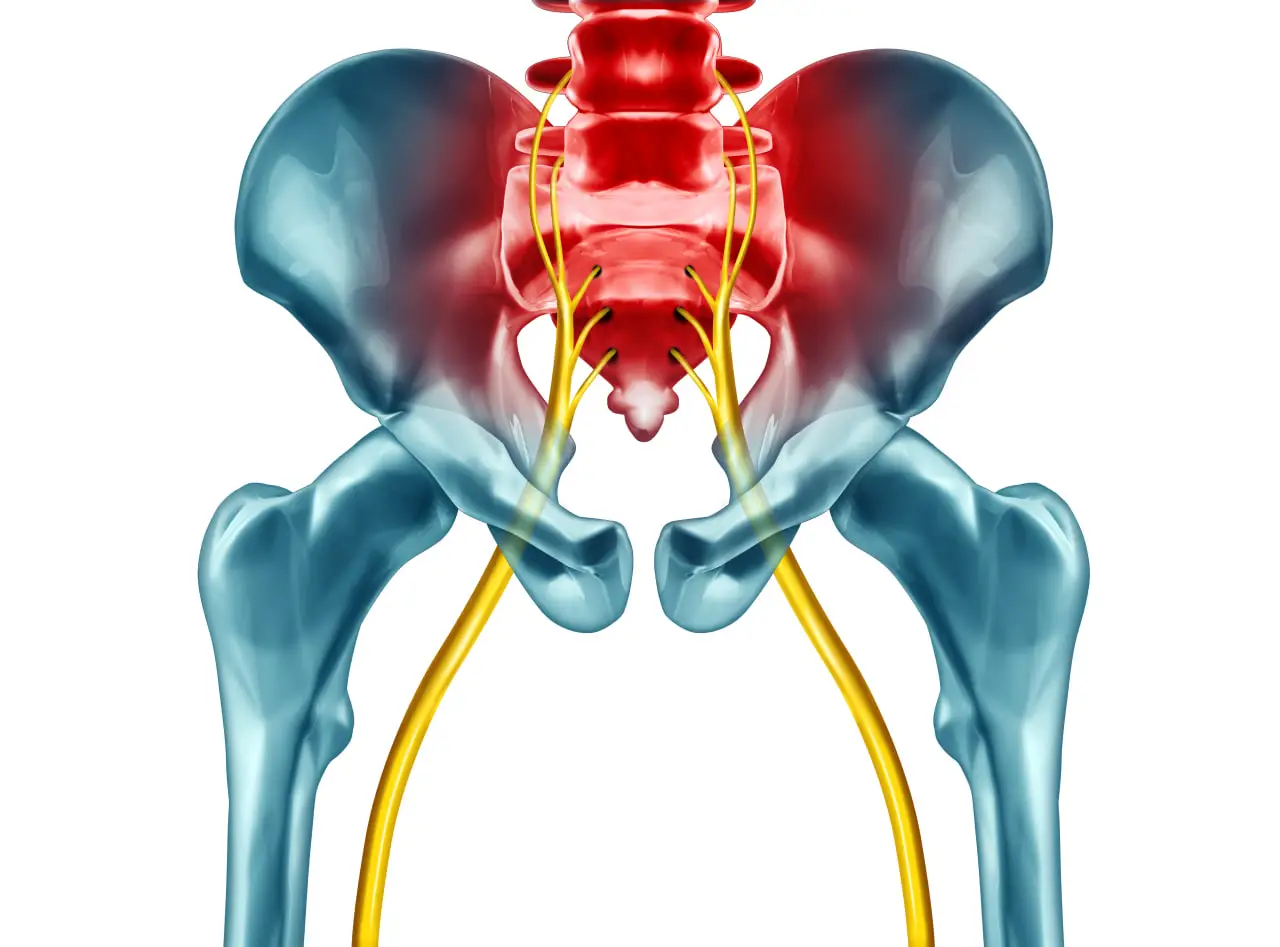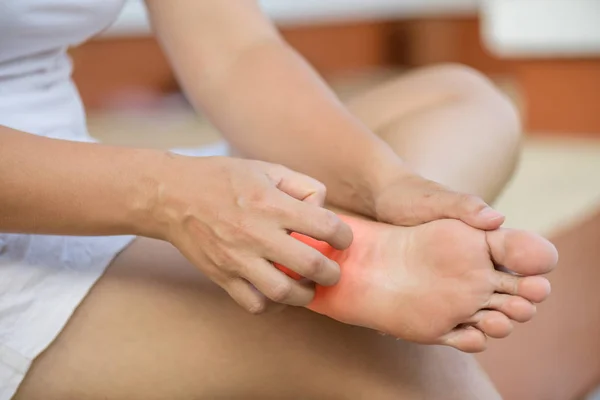Sciatica is a painful nerve condition that can cause extreme discomfort and even disability. It results from a pinched or irritated sciatic nerve, which is a long nerve that runs all the way from the lower back to the buttocks and legs.
Unfortunately, it’s also a very misunderstood condition. Sciatica is not a medical diagnosis in itself: it’s a set of symptoms caused by an underlying condition affecting the sciatic nerve. As such, sciatica can be caused by many different conditions and is one of the most common types of pain people experience. In fact, it’s estimated that around 40 percent of people will experience sciatica pain at some point in their life.
Fortunately, with the appropriate treatment, it is possible to reduce or even eliminate the pain associated with sciatica and to treat the underlying condition.
What Is Sciatica?
Sciatica is associated with the compression of the sciatic nerve root in the lower spine. This is known as sciatic nerve root entrapment, which can cause severe pain and may limit a person’s ability to move around or perform daily activities. Diagnosis of sciatica can be based on the patient’s medical history, physical examination, and various imaging tests such as an X-ray or MRI, which are also used to help diagnose the underlying condition.
Sciatic Nerve Anatomy
The sciatic nerve is the longest, thickest nerve in the body. It starts at the base of the spine and runs through the pelvis down through the buttocks, where it then splits into two branches that go down to the lower legs. The sciatic nerve is a mixed nerve, which carries both motor and sensory information.
When there is pressure or entrapment of a nerve root along the sciatic nerve, this can cause pain to radiate along the length of the nerve. This pain is commonly described as stabbing, burning, or even electric-like.
Symptoms Of Sciatica Pain
Sciatica can cause various symptoms due to the nerve being pinched or irritated. The type of symptom experienced can vary based on where the nerve is being affected and the underlying condition that’s causing sciatica. Common symptoms of sciatica include:
Pain in Lower Back, Bottom, and Legs
The most common sciatica symptom is pain radiating from the lower back, down to the butt and into one or both legs. Pain can be achy, burning, tingling, or sharp in nature and is usually worse when sitting or standing for long periods.
Numbness
Another symptom of sciatica can be feelings of numbness or tingling in the affected limb. This is due to the nerve being pinched or entrapped, which causes a disruption in the nerve’s ability to send pain signals. These feelings of numbness can be accompanied by an inability to feel certain sensations, such as pressure.
Loss of Movement
In more severe cases, sciatica can cause a loss of movement in the affected limb. This is due to the nerve being compressed and unable to send signals to the muscles, resulting in weakness or a feeling of heaviness. This can lead to difficulty walking and performing everyday activities.
Pins and Needles
People with sciatica may experience a pins and needles sensation when they put pressure on the affected limb or move it in certain positions. This is caused by nerve entrapment, which can cause the nerve to become overstimulated and send a tingling feeling throughout the area.
Swelling Or Redness
In some cases, sciatica can cause swelling or redness in the affected area. This is due to inflammation of the nerve root, which can be caused by an injury to the nerve or disk herniation. This can cause pain and discomfort in the area, as well as difficulty moving the affected limb.
Causes Of Sciatica
One of the reasons sciatica is so common is that so many different things can cause it. Some of the possible causes of sciatica include:
Herniated/Slipped Disk
The spine’s vertebrae are cushioned by disks, which help absorb shock and allow movement.
A herniated or slipped disk is a condition in which the cushioning between two vertebrae of the spine becomes damaged. If this occurs in the lower back, it can lead to the disk pinching or irritating the sciatic nerve, leading to lower back pain, arm or leg pain, numbness, and tingling.
A lot of things can cause a herniated disk. For example, lifting a heavy object using your back muscles can put pressure on the disks, leading to a herniated disk. A traumatic injury, such as an automobile accident or fall, can also cause a herniated disk.
Degenerative Disk Disease
Degenerative disk disease has the same effect on your sciatic nerve that a herniated disk does. The difference between the two conditions is that degenerative disk disease is caused by the gradual deterioration of the disks in the spine due to age or wear and tear. This can cause the disks to become weak and brittle, making them more prone to herniations or slips.
Spinal Stenosis
Spinal stenosis is when the spinal canal (the spaces in the spine) narrows, leading to increased pressure on the nerve roots. This can lead to pain, numbness, and tingling in the affected area.
Anyone can get spinal stenosis; however, it’s more common in older people, as the chances of developing the condition increase with age. This is because the ligaments keeping the vertebrae in place can thicken and calcify with age, thereby narrowing the spinal canal. It’s worth noting that some people are born with a narrow spinal canal as well, although this is rare. An injury (such as a fracture) can also cause the spinal canal to narrow.
Finally, there are some medical conditions that can lead to spinal stenosis. These conditions include arthritis, spinal tumors, and Paget’s disease.
Spondylolisthesis
Spondylolisthesis occurs when a vertebra slips over the vertebra located below it. If it slips too far, it can press on the sciatic nerve, causing pain and other symptoms. Spondylolisthesis is most common in people over the age of 50. It is typically the result of abnormal wear on the cartilage and bones, which is why arthritis is a very common cause of spondylolisthesis.
This condition can also be caused by bone disease or an injury (such as a fracture or dislocation). For example, people playing football or doing gymnastics are sometimes prone to spondylolisthesis.
Osteoarthritis
Osteoarthritis is known as the most common type of arthritis. It’s a degenerative condition in which the cartilage in the joint breaks down. Osteoarthritis can cause inflammation which can, in turn, lead to swelling and pain. Osteoarthritis in the spine (known as Spondylosis) and the hip joints can put pressure on the sciatic nerve.
Piriformis Syndrome
Piriformis syndrome is when the piriformis muscle becomes tight and irritates the sciatic nerve, leading to pain or numbness in the buttocks, hips, or upper legs.
The piriformis muscle is located in the butt, and when it becomes tight, it can compress the sciatic nerve. Piriformis syndrome can be caused by injury or overuse of the muscle, swelling, scar tissue, or muscle spasms.
Tumors
In rare cases, a tumor can cause the compression of the sciatic nerve and lead to pain and other symptoms. This can happen when the tumor is located in or near the spine.
Risk Factors Of Sciatica
There are a variety of risk factors that can lead to the underlying conditions that cause sciatica. These risk factors include the following:
Age
Age is one of the most common risk factors for sciatica. As you age, your spine will become more prone to injury and wear and tear. This is because, as you age, your spine is less able to heal itself and more likely to suffer from degenerative changes. In addition, age is a common risk factor for conditions like degenerative disk disease and osteoarthritis, all of which can lead to sciatica.
Obesity
Obesity is another risk factor for sciatica. Being overweight strains your spine by putting extra pressure on the vertebrae and disks. This can lead to conditions like herniated disks and spondylolisthesis, both of which can cause sciatica.
Poor Posture
Poor posture can also increase your risk of sciatica. Poor posture puts extra strain on the spine. It can lead to conditions like herniated disks and spinal stenosis, both of which can cause sciatica.
Occupation
Certain occupations can also increase your risk of sciatica. For example, occupations requiring heavy lifting, twisting, or other movements that strain the spine can lead to conditions like herniated disks and degenerative disk disease, both of which can lead to sciatica. For example, occupations such as construction workers and warehouse workers are more likely to suffer from sciatica.
How Diagnosis Works
When diagnosing sciatica, a doctor typically begins by taking a medical history from the patient and performing a physical exam. The doctor will perform the “straight leg raise test as part of the exam.” This involves the patient lying on the back and lifting his or her legs in a straight line to see if it causes pain. Additionally, the doctor may inspect the back for signs of weakness or tenderness. The doctor may also check reflexes, muscle strength, and sensation in the affected area.
In addition, the doctor may order imaging tests such as an X-ray, CT scan, or MRI. These imaging tests can help to identify any underlying conditions that may be causing the sciatica pain. Once a diagnosis is made, the doctor will create a treatment plan based on the severity of the condition and the underlying cause.
Sciatica Treatment Options
Sciatica is treated in various ways depending on the type of medical professional you’re seeing and the specifics of the diagnosis (meaning, the underlying cause). With that in mind, the following are some of the common ways that traditional doctors typically treat sciatica:
Medication
Medication is a common way to treat sciatica. Pain relievers including ibuprofen, naproxen, and acetaminophen, can help reduce inflammation and pain. Muscle relaxants are also sometimes prescribed to ease muscle spasms. In cases of severe pain, stronger pain medications such as opioids may be prescribed. However, the problem with medication, in general, is that it does not address the underlying cause of sciatica; it only treats the symptoms.
Additionally, many medications, especially stronger medications (such as opioids), come with potential side effects and can be habit-forming.
Physical Therapy
Physical therapy is another common way to treat sciatica. Physical therapy involves exercises that can help strengthen the muscles in the back and abdomen, as well as stretches to improve flexibility. These exercises can help reduce pain by relieving pressure on the sciatic nerve.
However, it is essential to note that not all exercises suit everyone. Before starting a physical therapy regimen, it is best to discuss with your doctor the types of exercises that would be most beneficial for you. If the condition isn’t properly diagnosed, the exercises aren’t tailored to the individual, or the exercises aren’t done correctly, physical therapy can actually make the sciatica pain worse.
Steroid Injections
Steroid injections are another form of treatment that can reduce inflammation and pain. Steroids can be injected directly into the area around the sciatic nerve, which helps to decrease inflammation and reduce pain. However, steroid injections — like medications — only provide short-term pain relief and don’t address the underlying condition.
On top of that, they can also have side effects, such as increased pain or swelling near the injection site, and can even result in an infection or even nerve damage if not administered correctly.
Microdiscectomy
Microdiscectomy is a type of surgery that should only be used if all other treatments have failed to provide relief. During the procedure, a surgeon removes a small portion of a herniated disk that is causing pressure on the sciatic nerve. This can help to reduce pain and improve mobility. However, as with any surgery, there are potential risks and side effects. Like all surgical procedures, microdiscectomy could result in complications such as infection and nerve damage. In addition, it can take a long time to recover from.
As well as dealing with additional pain and discomfort during the healing process, success is not guaranteed. Considering how expensive any invasive procedure can be, it’s best to explore all other options before pursuing surgery.
How Neurofunctional Pain Management Approaches Sciatica
Unlike more traditional treatment solutions, we take a conservative approach to treating sciatica pain, meaning we avoid the use of medications, invasive procedures, and chiropractic treatments. Instead, our Neurofunctional Pain Management (NFPM) protocol implements a Neurofunctional Pain Management approach.
This holistic approach to pain management focuses on providing long-term pain relief by addressing the underlying problem rather than just masking the symptoms. Our neurofunctional pain management approach combines various techniques to treat sciatica and other chronic pain conditions, such as electroanalgesia, IV therapy, and lifestyle counseling.
Electroanalgesia
Electroanalgesia is a pain management technique that uses high-pulse electrical current to ease pain, boost blood circulation, improve mobility, and induce...
IV Therapy
IV nutritional therapy, or intravenous therapy, involves administering vital nutrients directly to the bloodstream through an IV. This type of treatment bypasses the digestive system, allowing for maximum absorption and utilization of nutrients by the...
Lifestyle Counseling
Lifestyle counseling is an approach to managing chronic pain that involves identifying, assessing, and modifying lifestyle factors contributing to an individual's pain. For example, lifestyle factors such as nutrition, physical activity, stress, sleep quality...
Sciatica Prognosis
The prognosis for sciatica depends on the underlying cause of the condition. If a herniated disk is causing sciatica, the prognosis is generally good since the herniated disk may naturally move back into place over time. If a degenerative condition is causing sciatica, such as spinal stenosis or spondylolisthesis, the condition may be long-term and require ongoing management. However, with early diagnosis and proper treatment, sciatica can often be managed with minimal disruption to the patient’s daily activities.
Want to get a long-lasting pain management solution for sciatica? Schedule a consultation with us to get started.









